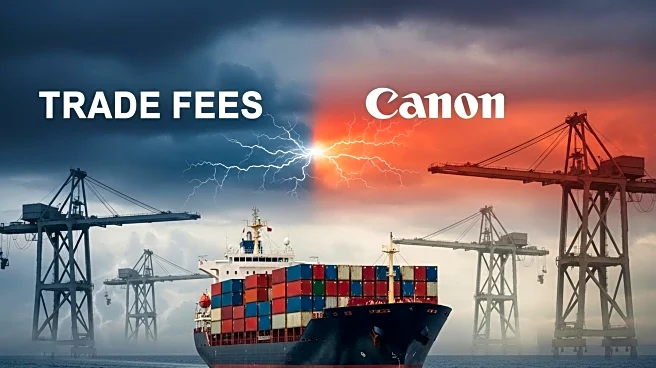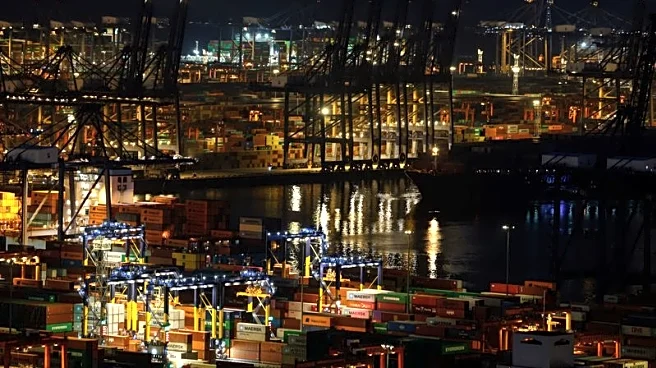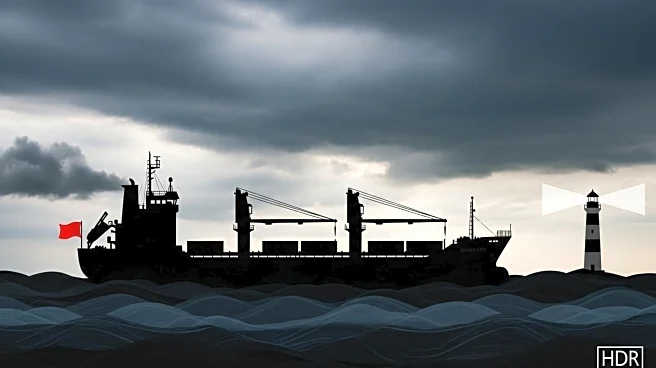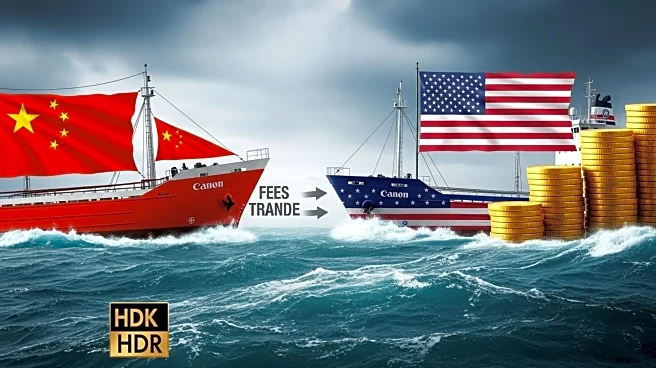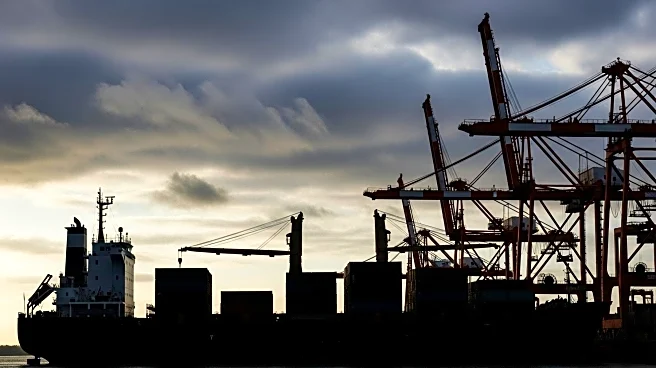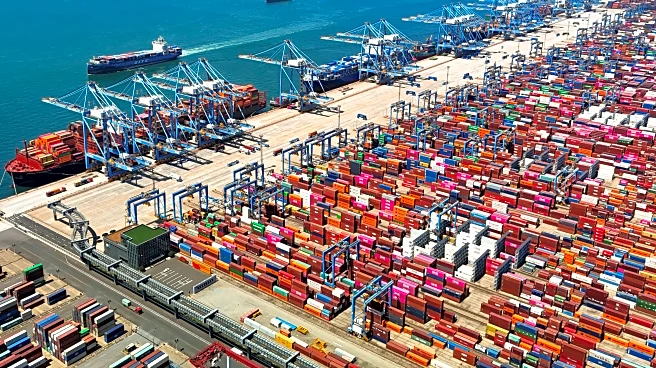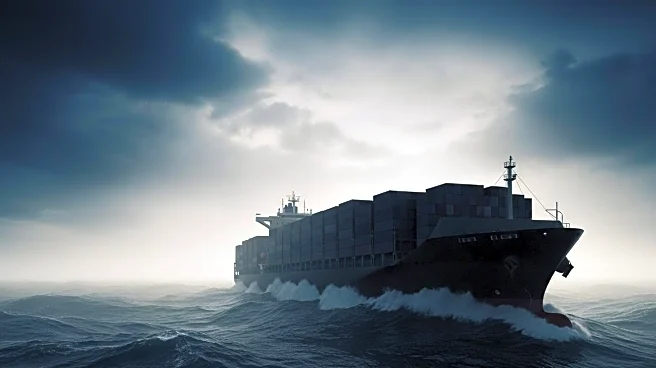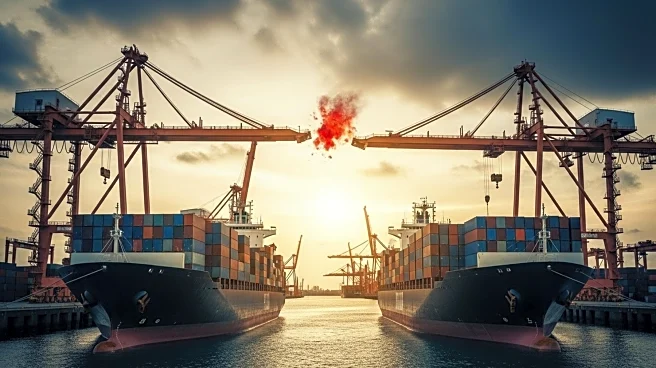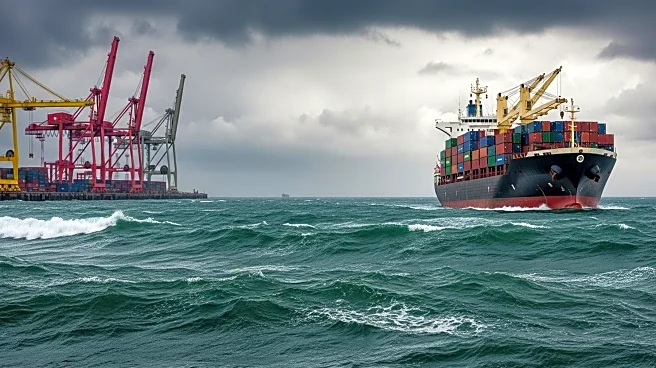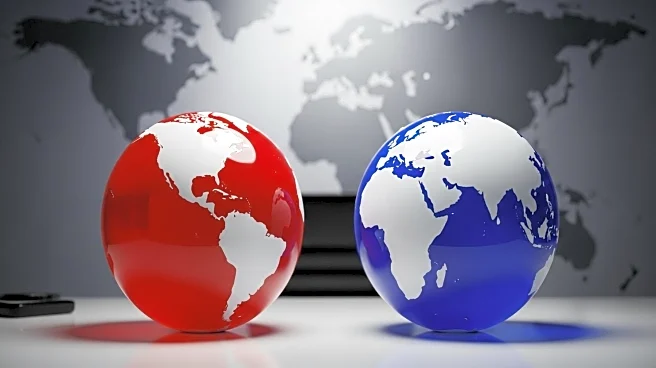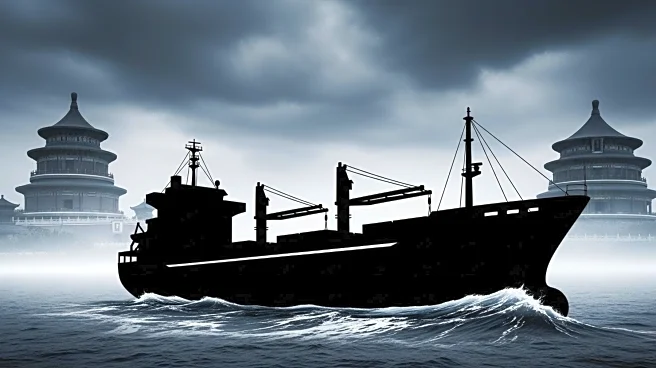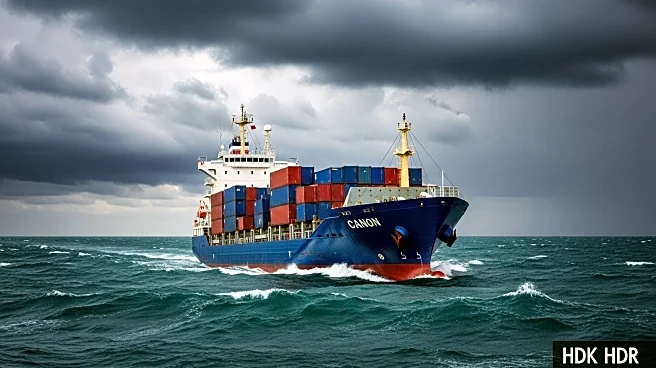What is the story about?
What's Happening?
China has announced port fees on U.S.-owned vessels docking in the country, responding to planned U.S. port fees on Chinese ships. The fees, set at 400 yuan per net ton, will increase annually until 2028. The move comes ahead of trade talks between President Trump and Chinese leader Xi Jinping. China's Ministry of Transport describes the fees as countermeasures against U.S. practices, criticizing them as discriminatory. The fees mirror U.S. plans to charge Chinese ships $50 per net ton, rising annually. Analysts warn that U.S. port fees could cost top carriers up to $3.2 billion next year.
Why It's Important?
The reciprocal port fees deepen the trade conflict between the U.S. and China, potentially affecting global shipping and trade dynamics. The fees could lead to increased costs for shipping companies, impacting freight rates and trade flows. The measures reflect broader geopolitical tensions, with implications for international economic stability and trade relations. The situation may affect industries reliant on maritime trade, including technology and manufacturing, potentially leading to higher consumer prices.
What's Next?
The fees are set to take effect soon, with potential impacts on shipping operations and costs. The trade conflict may influence upcoming talks between President Trump and Xi Jinping, potentially affecting future trade agreements and economic policies. Stakeholders in the shipping industry may need to adjust their strategies to mitigate financial impacts. The situation could lead to further retaliatory measures, affecting global supply chains and economic growth.
Beyond the Headlines
The trade conflict highlights the strategic importance of maritime regulations in international relations. The reciprocal fees underscore competitive dynamics between the U.S. and China in global shipping and trade. The situation raises questions about the long-term implications for international trade agreements and the role of protectionist policies in shaping global economic landscapes.
AI Generated Content
Do you find this article useful?
